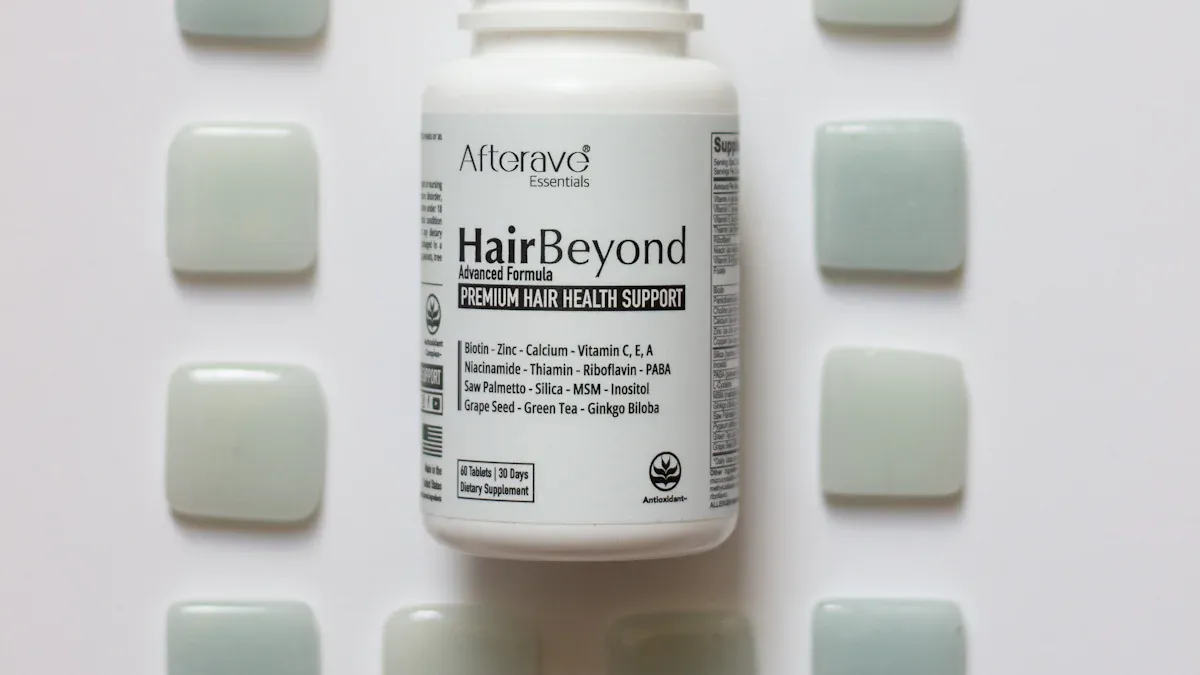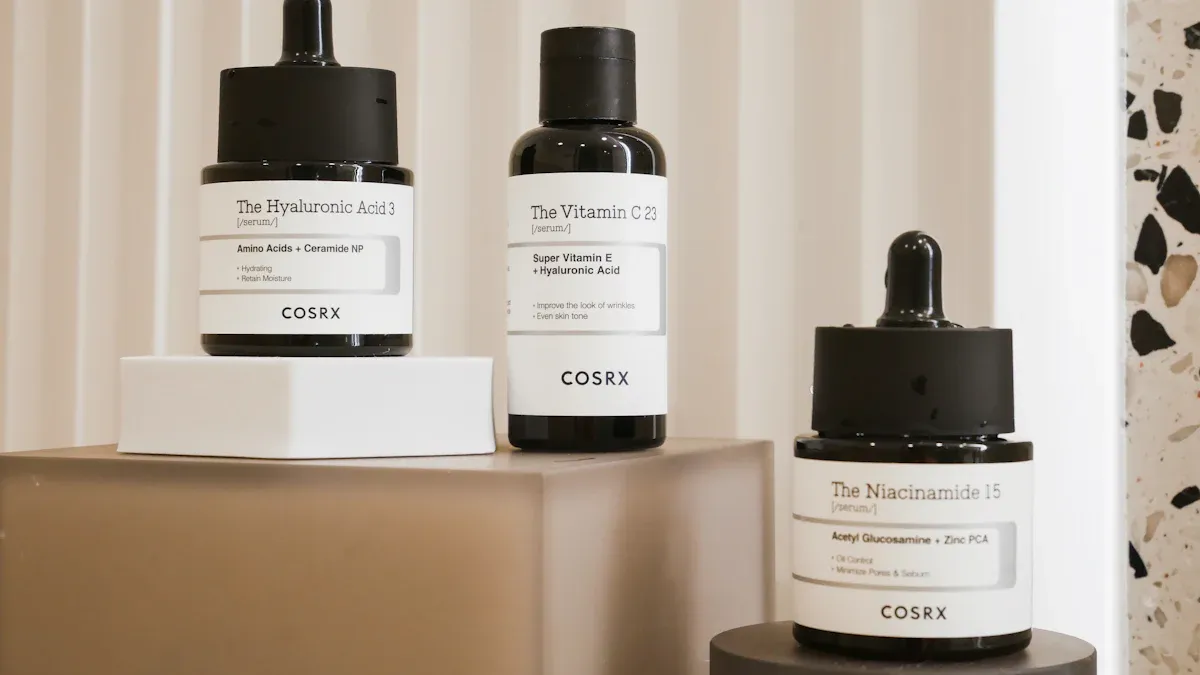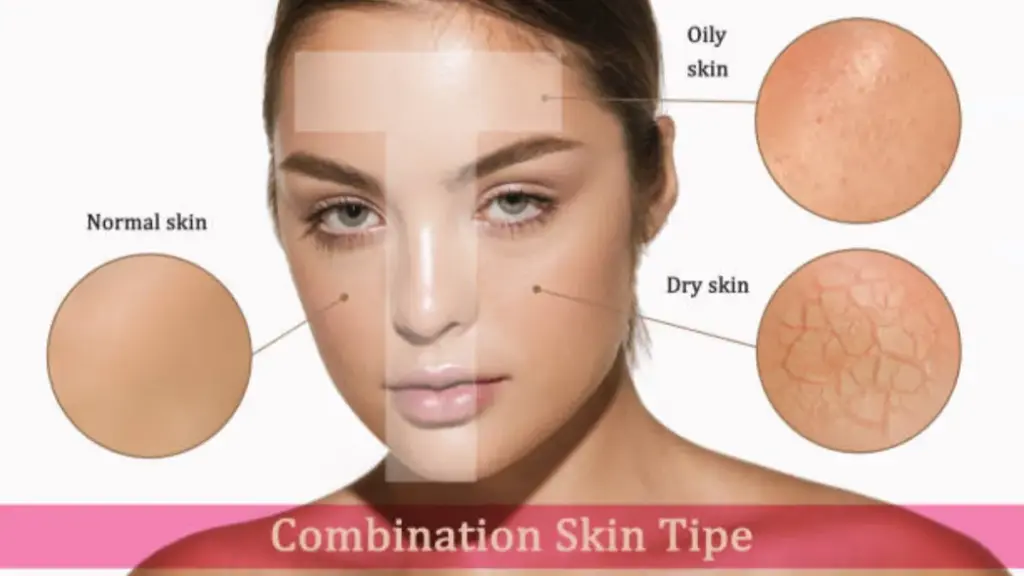
When it comes to creating safe and high-quality beauty products, cGMP manufacturing plays a crucial role. Short for “current good manufacturing practices,” cGMP serves as a regulatory framework designed to ensure that every product meets strict safety and quality standards. For beauty brands like yours, following these guidelines builds customer trust and ensures compliance with industry regulations. By prioritizing cGMP, you can protect consumers, enhance your brand’s reputation, and stand out in a competitive market.
What is cGMP Manufacturing?

Definition and significance of cGMP
सीजीएमपी, or current good manufacturing practices, represents a set of regulations designed to ensure the safety, गुणवत्ता, and consistency of products during manufacturing. These guidelines, enforced by the FDA under the Federal Food, दवाई, और कॉस्मेटिक अधिनियम, outline specific requirements for processes, गुणवत्ता नियंत्रण, and documentation. Compliance with cGMP is mandatory for manufacturers of pharmaceutical products in the U.S. and those exporting to the country under Mutual Recognition Agreements.
The significance of cGMP lies in its ability to protect consumers and maintain product efficacy. By adhering to these standards, you can avoid risks such as product recalls, FDA sanctions, or even criminal prosecution. Regulatory bodies like the FDA conduct regular inspections to verify compliance, documenting any deviations using Form FDA 483. These inspections ensure that manufacturing facilities meet the highest standards, safeguarding both your brand and your customers.
For beauty brands, cGMP compliance is not just about meeting legal requirements. It’s about building trust with your audience. When your products follow good manufacturing practices, you demonstrate a commitment to quality and safety. This assurance can set your brand apart in a competitive market, helping you gain loyal customers who value reliability and transparency.
Role of cGMP in the beauty and personal care industry
In the beauty and personal care industry, cGMP plays a vital role in ensuring the safety and effectiveness of cosmetic products. These regulations align closely with the ISO 22716 standard, which focuses on good manufacturing practices for cosmetics. By following cGMP, you can ensure that your products meet stringent hygiene, गुणवत्ता, and documentation standards.
The importance of cGMP becomes even clearer when considering the diverse range of cosmetic products available today. From facial creams to hair care solutions, each product requires careful formulation and testing to guarantee safety. Analytical testing, microbiological assessments, and shelf-life studies are essential for maintaining product quality. उदाहरण के लिए, Eurofins provides tools like QSAR analysis to help brands evaluate product safety and regulatory compliance. These services ensure that your products are not only effective but also safe for consumer use.
इसके अतिरिक्त, cGMP compliance enhances your ability to substantiate marketing claims. Whether you’re promoting anti-aging benefits or long-lasting wear, scientific validation strengthens your brand’s credibility. Regulatory consultation and toxicology testing further support your efforts to create products that meet both consumer expectations and legal standards.
By implementing cGMP practices, you can elevate your brand’s reputation and gain a competitive edge. Consumers are more likely to trust products manufactured in facilities that adhere to these guidelines. नतीजतन, your brand can thrive in a market that prioritizes safety, गुणवत्ता, and transparency.
Why is cGMP Important for Beauty Brands?
Ensuring product safety and consumer trust
Adhering to cGMP manufacturing ensures that your cosmetic products meet the highest safety and quality standards. These good manufacturing practices enforce strict quality control measures throughout the production process, from sourcing raw materials to product distribution. By following these guidelines, you protect consumers from potential risks and demonstrate your commitment to their well-being.
Neglecting cGMP standards can lead to serious consequences, such as product recalls or regulatory penalties. These incidents not only harm your brand’s reputation but also erode consumer trust. When you prioritize cGMP compliance, you show your customers that your products are safe, असरदार, और विश्वसनीय. This builds loyalty and fosters long-term relationships with your audience.
Meeting regulatory requirements, including MOCRA
The Modernization of Cosmetic Regulation Act (MOCRA) has introduced new requirements for beauty brands. As part of MOCRA guidelines, responsible parties must maintain detailed records of adverse events, product registration, facility registration, and safety substantiation. Accurate documentation of the manufacturing process, including raw materials and quality control measures, is essential for compliance.
cGMP plays a key role in meeting these FDA-mandated requirements. By implementing good manufacturing practices, you ensure that your products align with MOCRA’s safety and quality standards. This includes proper labeling, facility hygiene, and testing protocols. Compliance not only protects your brand from legal issues but also positions you as a trustworthy player in the beauty industry.
Enhancing brand reputation and market competitiveness
In a crowded market, cGMP compliance gives your brand a competitive edge. Consumers are increasingly aware of the importance of safety and quality in cosmetic products. When your manufacturing processes follow cGMP, you signal to your audience that your brand values transparency and reliability.
This commitment to good manufacturing practices strengthens your reputation and sets you apart from competitors. It also opens doors to international markets, as cGMP aligns with global standards like the European Cosmetics Regulation. By adhering to these practices, you position your brand as a leader in safety and innovation, attracting customers who prioritize quality.
Key Principles of cGMP
Quality control and assurance
Quality control is the backbone of cGMP. It ensures that every product meets the required safety and performance standards. By implementing robust quality control measures, you can identify and address potential issues during manufacturing. This process involves testing raw materials, monitoring production, and verifying the final product’s quality.
The FDA emphasizes the importance of a flexible approach to quality management. Integrating real-time data and emerging knowledge allows you to adapt to evolving cGMP standards. उदाहरण के लिए, continual improvement in manufacturing processes promotes consistent product quality. इसके अतिरिक्त, adopting modern technologies enhances your ability to meet regulatory requirements and maintain high standards.
Case studies highlight the critical role of oversight in quality assurance. उदाहरण के लिए, contract manufacturers must ensure product quality, even when outsourcing production. Comprehensive monitoring programs and supplier qualifications are essential to maintaining compliance and protecting your brand’s reputation.
Hygiene and sanitation standards
Hygiene and sanitation are vital for producing safe cosmetic products. Adhering to cGMP requires maintaining clean facilities, उपकरण, and workspaces. Proper sanitation prevents contamination and ensures the safety of your products.
Training plays a significant role in upholding hygiene standards. Employees must receive ongoing education on allergen control, cleaning procedures, and sanitation protocols. Regular audits and inspections help identify areas for improvement. Documentation of cleaning activities and validation through testing methods further ensures compliance.
Environmental monitoring is another key aspect. Microbial testing evaluates the effectiveness of sanitation practices and guides necessary adjustments. By prioritizing hygiene, you can produce high-quality products that meet the ISO 22716 standard and gain consumer trust.
पहलू | विवरण |
|---|---|
Training | Ongoing and targeted training on allergen control, cleaning and sanitation procedures, and monitoring. |
Audits | Periodic audits and inspections of facilities and suppliers, either in-house or by third-party firms. |
Documentation | Documentation of training, raw material handling, cleaning, and sanitation activities. |
Validation/Evaluation | Evaluation of training effectiveness and validation of cleaning through testing methods. |
Environmental Monitoring | Development of programs for microbial testing to evaluate sanitation effectiveness and guide improvements. |
Documentation and record-keeping
Thorough documentation is a cornerstone of cGMP compliance. Accurate records ensure data integrity and provide traceability for all manufacturing activities. This is crucial for investigating deviations and implementing corrective actions.
Regulatory bodies like the FDA enforce strict documentation standards. All records must be स्पष्ट, legible, and approved by qualified personnel. Regular reviews and updates ensure compliance with evolving regulations. Failure to maintain proper documentation can lead to severe consequences, such as product recalls or legal actions.
Effective documentation supports quality management systems and fosters accountability. It also serves as evidence of compliance during inspections. उदाहरण के लिए, maintaining complete data from laboratory analyses and justifying retests are essential practices. By prioritizing record-keeping, you can align with the ISO 22716 standard and strengthen your quality control measures.
Employee training and competency
Employee training is a cornerstone of cGMP compliance. Your team must possess the knowledge and skills required to perform their tasks effectively. Without proper training, employees may inadvertently compromise product safety or quality. By investing in comprehensive training programs, you ensure that your workforce understands cGMP principles and applies them consistently.
The FDA emphasizes the importance of training in maintaining compliance. Employees must demonstrate competency in their roles, and firms are expected to evaluate the effectiveness of training programs. If an employee fails to meet the required standards, you must remove them from their tasks until they acquire the necessary skills. This approach safeguards your manufacturing processes and protects your brand’s reputation.
Ongoing assessments play a vital role in refining training programs. You can use evaluation checklists, tests, and feedback from course participants to measure training effectiveness. These tools help identify gaps in knowledge and provide insights for improvement. उदाहरण के लिए:
Training ensures employees are qualified for their roles.
Regular evaluations improve the quality of training programs.
Feedback from participants highlights areas for enhancement.
Incorporating these practices into your training strategy demonstrates your commitment to quality. It also aligns with FDA expectations, as outlined in consent decrees. By prioritizing employee competency, you create a culture of accountability and excellence within your organization.
Remember, well-trained employees are your first line of defense against compliance issues. Their expertise ensures that every product leaving your facility meets the highest standards of safety and quality.
Essential Requirements for cGMP Compliance
Facility and equipment standards
Your facility and equipment must meet strict standards to comply with cGMP. These standards ensure that your manufacturing environment supports safe and high-quality production. The FDA enforces these regulations to guarantee that your products meet safety and quality benchmarks. Key elements include maintaining clean and well-organized premises, using properly calibrated equipment, and ensuring all tools are suitable for their intended use.
The 5Ps of GMP—Products, People, Processes, Premises, and Performance—summarize the essential components of compliant manufacturing. उदाहरण के लिए, your premises must prevent contamination, and your equipment must undergo regular maintenance and calibration. This ensures consistent performance and minimizes risks during production.
विवरण | |
|---|---|
Equipment Maintenance | Ensures that equipment is adequately constructed, cleaned, maintained, and calibrated. |
Contamination Prevention | Prevents contamination through proper handling and storage of components and containers. |
Inspection Readiness | Maintains records for authorized inspections throughout the retention period. |
By adhering to these standards, you create a safe and efficient production environment that aligns with both FDA and European Cosmetics Regulation requirements.
Raw material sourcing and handling
Raw materials play a critical role in cGMP compliance. You must ensure that all materials meet quality standards before they enter your production process. This involves sourcing from qualified suppliers, verifying material traceability, and conducting thorough inspections upon receipt.
Increased globalization has made supplier qualification and monitoring more important than ever. Regulatory bodies like the FDA emphasize the need for robust supply chain strategies. To comply, you should establish a comprehensive plan that includes risk-based audits of suppliers and clear documentation of material handling procedures.
“Supplier qualification and material traceability are essential for maintaining cGMP compliance and ensuring product safety.”
इन प्रथाओं को लागू करके, you reduce the risk of contamination and ensure that your products meet the standards outlined in the Modernization of Cosmetic Regulation Act (MOCRA).
Product testing and quality assurance
Testing and quality assurance are vital for ensuring that your products meet cGMP standards. You must conduct thorough testing at every stage of production, from raw materials to the final product. This includes stability testing, microbiological assessments, and method validation.
तत्व | विवरण |
|---|---|
Drug Product Stability Testing | Includes full shelf-life studies and accelerated testing on samples from representative batches. |
Laboratory Records | Requires detailed records of sample descriptions, method validation, and test accuracy. |
GLP Regulations | Covers management responsibilities, quality assurance, and documentation practices. |
These measures ensure that your products are safe, असरदार, and compliant with MOCRA. गुणवत्ता आश्वासन को प्राथमिकता देकर, you build trust with your customers and strengthen your brand’s reputation.
Packaging and labeling requirements
Packaging and labeling play a critical role in cGMP compliance. These elements ensure that your products meet regulatory standards while providing consumers with accurate and essential information. Proper packaging safeguards the product’s integrity, while compliant labeling communicates its purpose, सामग्री, and usage instructions.
To comply with cGMP, you must implement strict quality control processes for packaging and labeling. This includes verifying that all materials are free from defects and suitable for their intended use. उदाहरण के लिए, tamper-evident seals and child-resistant closures enhance safety and meet regulatory expectations. इसके अतिरिक्त, your labels must accurately reflect the product’s contents, including ingredient lists, warnings, and claims. Misleading or incomplete labels can lead to regulatory penalties and damage your brand’s reputation.
Regulatory studies emphasize the importance of packaging and labeling in maintaining compliance. The table below highlights key insights:
स्रोत | प्रमुख बिंदु |
|---|---|
SECG on CGMP for Dietary Supplements | |
CGMP Compliance and Herbal Products | Highlights the importance of accurate labeling and the need for substantiation of claims to meet regulatory standards. |
All about GMP labeling | Discusses the necessity of quality control processes and SOPs for maintaining compliance in labeling. |
You should also develop standard operating procedures (रियायतों) for packaging and labeling activities. These SOPs guide your team in maintaining consistency and accuracy. Regular audits and inspections help identify potential issues, ensuring that your processes remain compliant with cGMP standards.
By prioritizing packaging and labeling, you protect your customers and strengthen your brand’s credibility. Clear, accurate labels and secure packaging demonstrate your commitment to quality and safety, fostering trust and loyalty among your audience.
Benefits of Adhering to cGMP
Improved product safety and quality
Adhering to good manufacturing practices ensures that your cosmetic products meet the highest safety and quality standards. These practices enforce strict quality control measures throughout the production process. From sourcing raw materials to packaging, every step is designed to eliminate risks and maintain consistency.
When you follow cGMP, you reduce the chances of contamination or defects in your products. Quality control measures, such as regular testing and monitoring, help identify issues early. This proactive approach ensures that your products are safe for consumers and perform as intended. By prioritizing quality management, you create reliable cosmetic products that stand out in the market.
Strengthened consumer trust and loyalty
Consumers value brands that prioritize safety and transparency. When your products comply with cGMP, you show your commitment to their well-being. This builds trust and encourages loyalty among your audience.
Market research highlights several benefits of cGMP adherence:
Improvement of product safety and consistency
Elimination of potential risks and recalls
Marketing advantages over competitors without third-party audits
Increased consumer confidence and brand loyalty
By maintaining high standards, you create a positive reputation for your brand. Customers are more likely to return to a brand they trust, strengthening your position in the beauty industry.
Reduced risk of recalls and regulatory penalties
Non-compliance with cGMP can lead to costly recalls and legal issues. These incidents damage your brand’s reputation and erode consumer trust. By adhering to cGMP, you minimize these risks and ensure smooth operations.
Regular inspections and documentation keep your processes aligned with regulatory requirements. This reduces the likelihood of penalties and protects your brand from financial losses. A strong focus on quality management also helps you avoid disruptions in production. When your products meet safety and quality standards, you safeguard your business and maintain consumer confidence.
Long-term cost savings and operational efficiency
Implementing cGMP practices not only ensures compliance but also delivers significant financial and operational benefits. By embedding these practices into your manufacturing processes, you can achieve long-term cost savings and improve efficiency across your operations.
One of the key advantages of cGMP compliance is the reduction of errors. Systematic techniques for investigations and corrective and preventive actions (CAPAs) help identify and address issues early. This minimizes operator mistakes and optimizes resource use, leading to better business outcomes. उदाहरण के लिए, when your team follows standardized procedures, you reduce waste and avoid costly rework.
Consistency in performance is another benefit of cGMP. Adhering to these standards ensures that your operations run smoothly, with fewer deviations from established protocols. This consistency reduces the time and effort spent on compliance-related tasks, allowing you to focus on scaling your business. इसके अतिरिक्त, integrating compliance into your daily operations fosters a culture of continuous improvement, driving operational excellence.
Optimizing IT systems also plays a crucial role in enhancing efficiency. By aligning your technology with cGMP requirements, you streamline processes and improve manufacturing performance. उदाहरण के लिए, systematic CAPAs supported by advanced IT systems can lead to significant efficiency gains, extending beyond compliance to overall operational success.
The table below highlights how cGMP compliance contributes to cost savings and efficiency:
साक्ष्य विवरण | Impact on Cost Savings and Efficiency Gains |
|---|---|
Systematic techniques for investigations and CAPAs can improve compliance and cut costs. | Organizations can achieve superior business results by reducing operator error and enhancing resource efficiency. |
Compliance minimizes deviation from standards, guiding superior efficiency. | Consistent performance levels lead to reduced compliance efforts and improved operational efficiency. |
Integrating compliance into operations fosters continuous improvement. | Making FDA compliance part of operations acts as a catalyst for operational excellence. |
Optimizing IT systems with process thinking enhances manufacturing efficiency. | Systematic CAPAs can lead to significant efficiency gains that extend beyond mere compliance. |
By adopting cGMP practices, you not only ensure product safety and quality but also create a more efficient and cost-effective operation. These benefits position your brand for long-term success in the competitive beauty industry.
How Beauty Brands Can Implement cGMP Practices

Conducting a cGMP compliance audit
A cGMP compliance audit is the first step in ensuring your beauty brand meets regulatory standards. This process helps you identify gaps in your operations and align them with cGMP requirements. नियमित ऑडिट आयोजित करके, you can maintain high manufacturing standards and avoid potential compliance issues.
To carry out an effective audit, follow these critical steps:
Understand Regulations: Familiarize yourself with cGMP regulations and how they apply to your manufacturing processes. This knowledge forms the foundation of your compliance efforts.
Conduct Internal Audits: Regularly assess your operations to ensure they meet cGMP standards. Internal audits help you identify and address issues before they escalate.
Train Employees: Provide ongoing training to your team on cGMP requirements and best practices. A well-informed workforce is essential for maintaining compliance.
Maintain Documentation: Keep detailed records of all manufacturing activities, including quality control measures. Accurate documentation ensures traceability and supports regulatory inspections.
In addition to these steps, focus on validating critical manufacturing processes, qualifying equipment and personnel, and implementing robust quality control measures. Addressing complaints and recall procedures also strengthens your compliance framework.
A thorough compliance audit not only ensures adherence to cGMP but also builds a strong foundation for product safety and quality.
Developing standard operating procedures (रियायतों)
Standard operating procedures (रियायतों) are essential for translating complex cGMP regulations into actionable steps. These documents guide your team in performing tasks consistently and effectively, reducing the risk of errors.
Well-written SOPs enhance product quality and ensure compliance with regulatory standards. They serve as a foundation for employee training, helping your team understand their roles and responsibilities. उदाहरण के लिए, clear instructions for personnel training and system maintenance can prevent regulatory issues and ensure product safety.
To create effective SOPs, follow these guidelines:
Keep It Clear and Concise: Avoid lengthy and unclear instructions. Focus on providing straightforward steps that are easy to follow.
Align with cGMP Requirements: Ensure your SOPs address all relevant cGMP standards, including hygiene, documentation, और गुणवत्ता नियंत्रण.
Regularly Update SOPs: Review and revise your procedures to reflect changes in regulations or manufacturing processes.
In one documented case, unclear SOPs led to unqualified training methods, increasing risks for consumers. This highlights the importance of creating focused and understandable procedures.
By developing robust SOPs, you can streamline your operations and ensure compliance with both cGMP and MOCRA requirements.
Investing in employee training programs
Your employees play a crucial role in implementing cGMP practices. Without proper training, even the best systems and procedures can fail. Investing in comprehensive training programs ensures your team understands the importance of maintaining a clean and safe work environment.
Effective training programs cover key areas such as proper handling of hazardous materials, contamination prevention, and adherence to cGMP regulations. These programs not only enhance product safety but also improve employee competency. Trained professionals can identify potential risks and take corrective actions, ensuring compliance with regulatory standards.
Consider these benefits of cGMP training:
Workers learn to maintain a safe and hygienic workplace, which is critical for product quality.
Proper handling procedures reduce the risk of contamination and protect employee safety.
Knowledge of cGMP regulations improves job performance and marketability in regulated industries.
A well-trained workforce is your first line of defense against compliance issues. Their expertise ensures that every product meets the highest standards of safety and quality.
By prioritizing employee training, you create a culture of accountability and excellence within your organization. This commitment not only supports cGMP compliance but also strengthens your brand’s reputation in the beauty industry.
Partnering with cGMP-compliant manufacturers like Oully
Choosing the right manufacturing partner is essential for beauty brands aiming to meet cGMP manufacturing standards. A trusted partner ensures your products comply with regulations like MOCRA while maintaining high safety and quality standards. औली, a leading private label and contract manufacturer, offers expertise and resources to help your brand succeed.
Oully operates a state-of-the-art facility certified by the FDA, आईएसओ, और सीजीएमपी. यह 45,000 वर्ग. फुट. facility is equipped to handle diverse beauty and personal care products, शरीर की देखभाल सहित, चेहरे की देखभाल, बालों की देखभाल, cosmetics, और पुरुषों की संवारना. With over a decade of industry experience, Oully has built a reputation for delivering reliable and customizable solutions.
When you partner with Oully, you gain access to advanced manufacturing processes that prioritize quality and compliance. Their team conducts thorough product testing, ensuring your formulations meet safety standards and align with MOCRA requirements. Oully also emphasizes sustainable practices, helping you create eco-friendly products that resonate with modern consumers.
Flexibility is another advantage of working with Oully. They offer low minimum order quantities (मोक्स), making it easier for emerging brands to enter the market. Their fast 21-day production turnaround ensures your products reach consumers quickly. इसके अतिरिक्त, Oully provides dropshipping services, streamlining logistics and reducing operational burdens.
Oully’s commitment to innovation sets them apart. Their experts collaborate with you to develop custom formulations tailored to your brand’s vision. घटक चयन से लेकर पैकेजिंग डिजाइन तक, Oully supports every step of the manufacturing process. This comprehensive approach ensures your products stand out in a competitive market.
Partnering with Oully simplifies compliance with cGMP manufacturing standards. Their expertise in regulatory requirements, including MOCRA, ensures your products meet legal and safety benchmarks. Oully का चयन करके, you align your brand with a manufacturer that values quality, transparency, और स्थिरता.
Working with a cGMP-compliant manufacturer like Oully not only ensures product safety but also strengthens your brand’s reputation. Their reliable services and innovative solutions help you build trust with consumers and achieve long-term success.
cGMP compliance is essential for beauty brands to ensure product safety, meet regulatory standards, and build consumer trust. It safeguards your brand’s reputation by maintaining high-quality manufacturing practices. Key aspects like personnel training, facility maintenance, and quality assurance processes play a critical role in achieving these goals.
Partnering with a trusted manufacturer like Oully simplifies this journey. Their expertise in cGMP-certified production ensures your products meet the highest standards. By prioritizing cGMP compliance, you position your brand for long-term success and gain a competitive edge in the beauty industry.
Remember: A commitment to cGMP is a commitment to excellence.
उपवास
What does cGMP stand for, और यह महत्वपूर्ण क्यों है?
cGMP stands for “current good manufacturing practices.” It ensures that products are consistently produced and controlled according to quality standards. For beauty brands, cGMP compliance guarantees product safety, builds consumer trust, and meets regulatory requirements like MOCRA.
How can I ensure my beauty brand complies with cGMP?
You can ensure compliance by conducting regular audits, developing clear SOPs, training employees, and partnering with a cGMP-certified manufacturer like Oully. These steps help maintain high-quality standards and align your processes with regulatory expectations.
Is cGMP compliance mandatory for beauty brands?
हाँ, cGMP compliance is mandatory for beauty brands in many regions, including the U.S. The FDA enforces these regulations to ensure product safety and quality. Non-compliance can lead to recalls, penalties, or legal issues.
What role does documentation play in cGMP compliance?
Documentation ensures traceability and accountability in manufacturing. It records every step of the process, from raw material sourcing to final product testing. Proper documentation supports regulatory inspections and helps identify and resolve issues quickly.
Why should I partner with a cGMP-certified manufacturer like Oully?
Partnering with a cGMP-certified manufacturer ensures your products meet safety and quality standards. Oully offers expertise, advanced facilities, and customizable solutions. Their compliance with FDA, आईएसओ, and cGMP regulations simplifies your journey to market success.
















